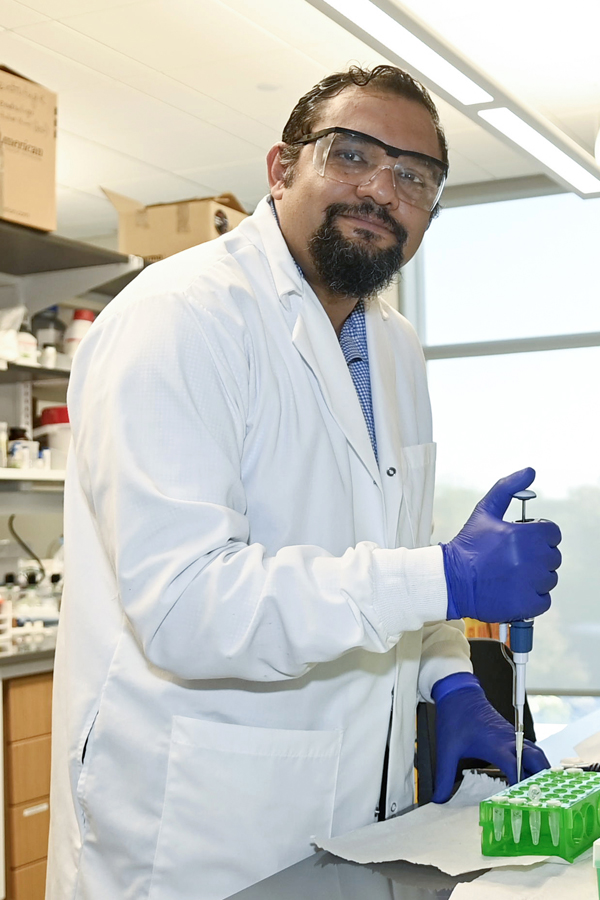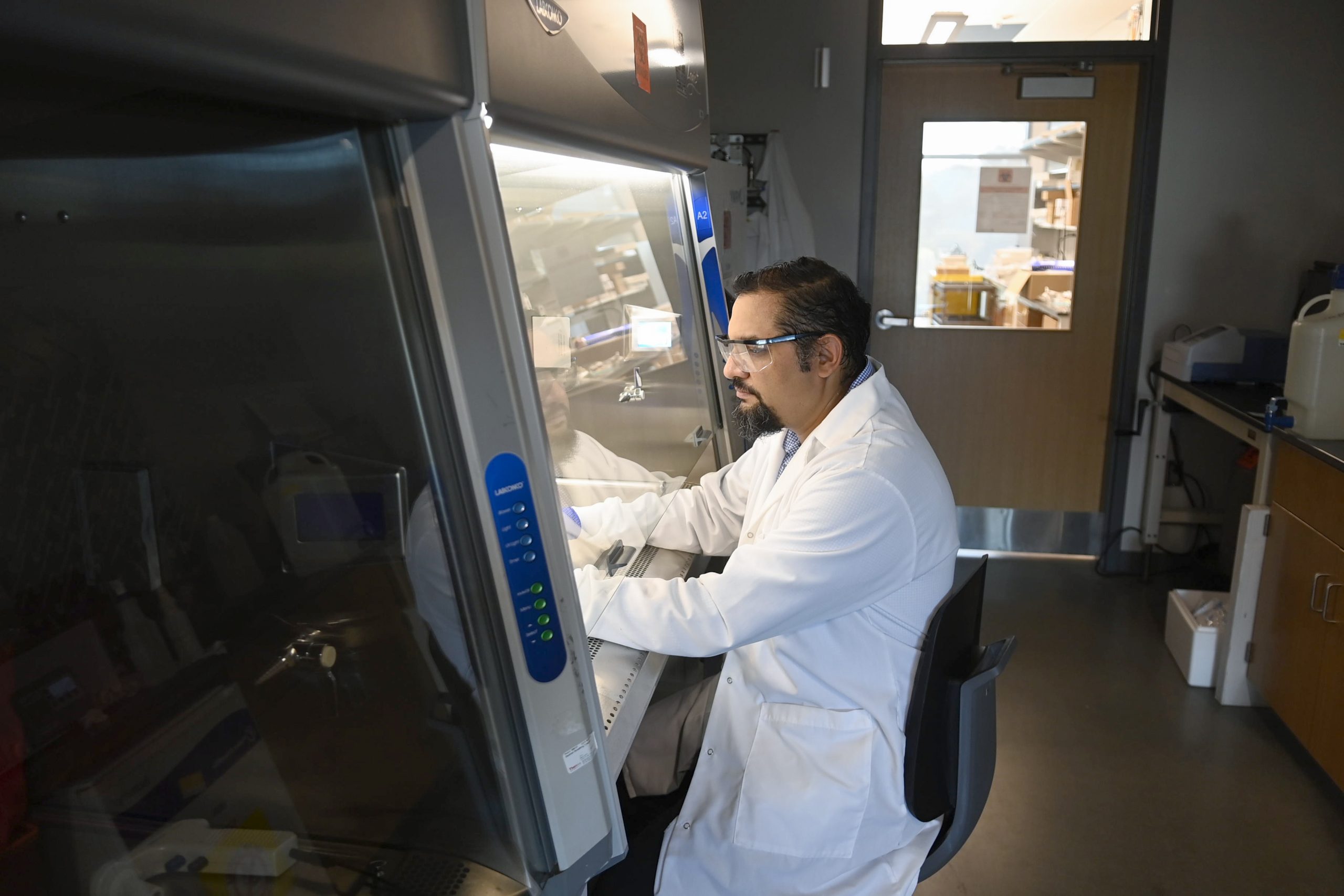Juan Vivero-Escoto
Bacteria Destroyer

As a kid growing up in Mexico City, Juan Vivero-Escoto came across a book titled “Microbe Hunters,” about the lives of influential microbiologists. After reading it, he declared to his family, “I want to be a scientist.”
After college, Vivero-Escoto studied chemical engineering and worked as a chemist for a private company. Growing bored, he returned to his original dream. He came to the United States to earn a Ph.D. in chemistry at Iowa State University, then, before moving to UNC Charlotte in 2012, went to UNC Chapel Hill for post-doctoral studies. In addition to his background in chemistry, he gained knowledge in biological applications of materials.
Today, the assistant chemistry professor is hunting for solutions to kill bacteria that have become resistant to antibiotics. With antibiotics overuse, underuse and incorrect use, bacteria have adapted to avoid being killed, he explained, making antibiotics less effective as a treatment.
Vivero-Escoto and Mariya Munir, a CIPHER colleague from the William States Lee College of Engineering, received a joint National Institutes for Health grant for their innovative research to develop new materials and understand how they work to eliminate antibiotic-resistant bacteria and genes.
“Maybe at some point, I will be in a book, too – that guy from Mexico who came to the U.S. and contributed to science.”
In his research, Vivero-Escoto applies chemistry and material science to modify nanoparticles – tiny materials invisible to the naked eye – with silver. While antibiotics are taken orally, nanoparticles are applied to bacteria topically, using a powder or a cream. A light source activates the nanoparticles, which degrade and release silver ions that kill antibiotic-resistant bacteria and genes.
“By using light and material, we are killing these bacteria more effectively than with antibiotics,” he said. Another benefit of this method is that the bacteria should not develop resistance to the silver. Vivero-Escoto says this technology eventually could have medical uses, such as treating wounded soldiers on the field to prevent infection or coating medical implants to prevent bacteria from growing on them.
“Maybe at some point, I will be in a book, too – that guy from Mexico who came to the U.S. and contributed to science,” Vivero-Escoto said.
As a kid growing up in Mexico City, Juan Vivero-Escoto came across a book titled “Microbe Hunters,” about the lives of influential microbiologists. After reading it, he declared to his family, “I want to be a scientist.”
After college, Vivero-Escoto studied chemical engineering and worked as a chemist for a private company. Growing bored, he returned to his original dream. He came to the United States to earn a Ph.D. in chemistry at Iowa State University, then, before moving to UNC Charlotte in 2012, went to UNC Chapel Hill for post-doctoral studies. In addition to his background in chemistry, he gained knowledge in biological applications of materials.
Today, the assistant chemistry professor is hunting for solutions to kill bacteria that have become resistant to antibiotics. With antibiotics overuse, underuse and incorrect use, bacteria have adapted to avoid being killed, he explained, making antibiotics less effective as a treatment.
Vivero-Escoto and Mariya Munir, a CIPHER colleague from the William States Lee College of Engineering, received a joint National Institutes for Health grant for their innovative research to develop new materials and understand how they work to eliminate antibiotic-resistant bacteria and genes.

“Maybe at some point, I will be in a book, too – that guy from Mexico who came to the U.S. and contributed to science.”
In his research, Vivero-Escoto applies chemistry and material science to modify nanoparticles – tiny materials invisible to the naked eye – with silver. While antibiotics are taken orally, nanoparticles are applied to bacteria topically, using a powder or a cream. A light source activates the nanoparticles, which degrade and release silver ions that kill antibiotic-resistant bacteria and genes.
“By using light and material, we are killing these bacteria more effectively than with antibiotics,” he said. Another benefit of this method is that the bacteria should not develop resistance to the silver. Vivero-Escoto says this technology eventually could have medical uses, such as treating wounded soldiers on the field to prevent infection or coating medical implants to prevent bacteria from growing on them.
“Maybe at some point, I will be in a book, too – that guy from Mexico who came to the U.S. and contributed to science,” Vivero-Escoto said.
